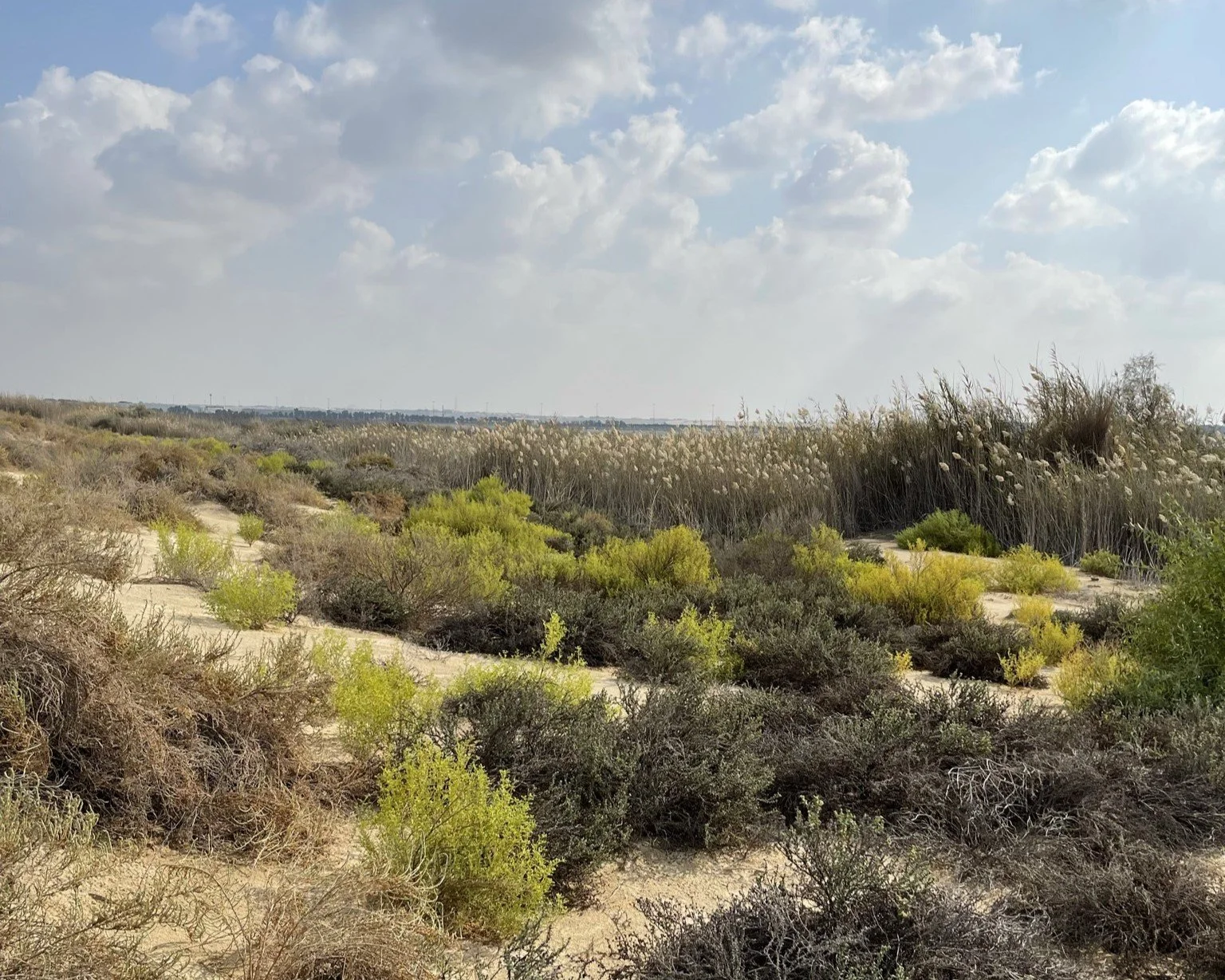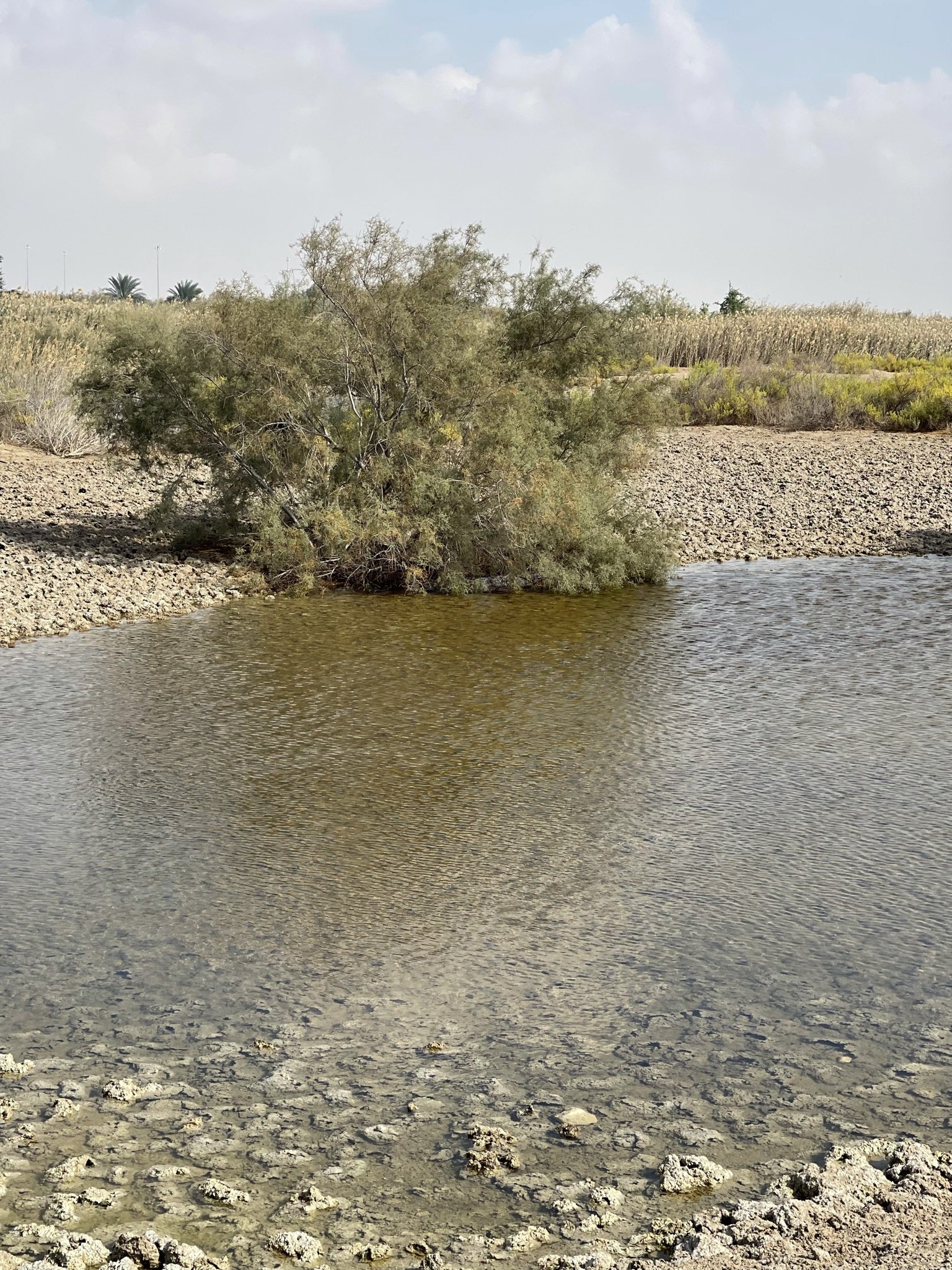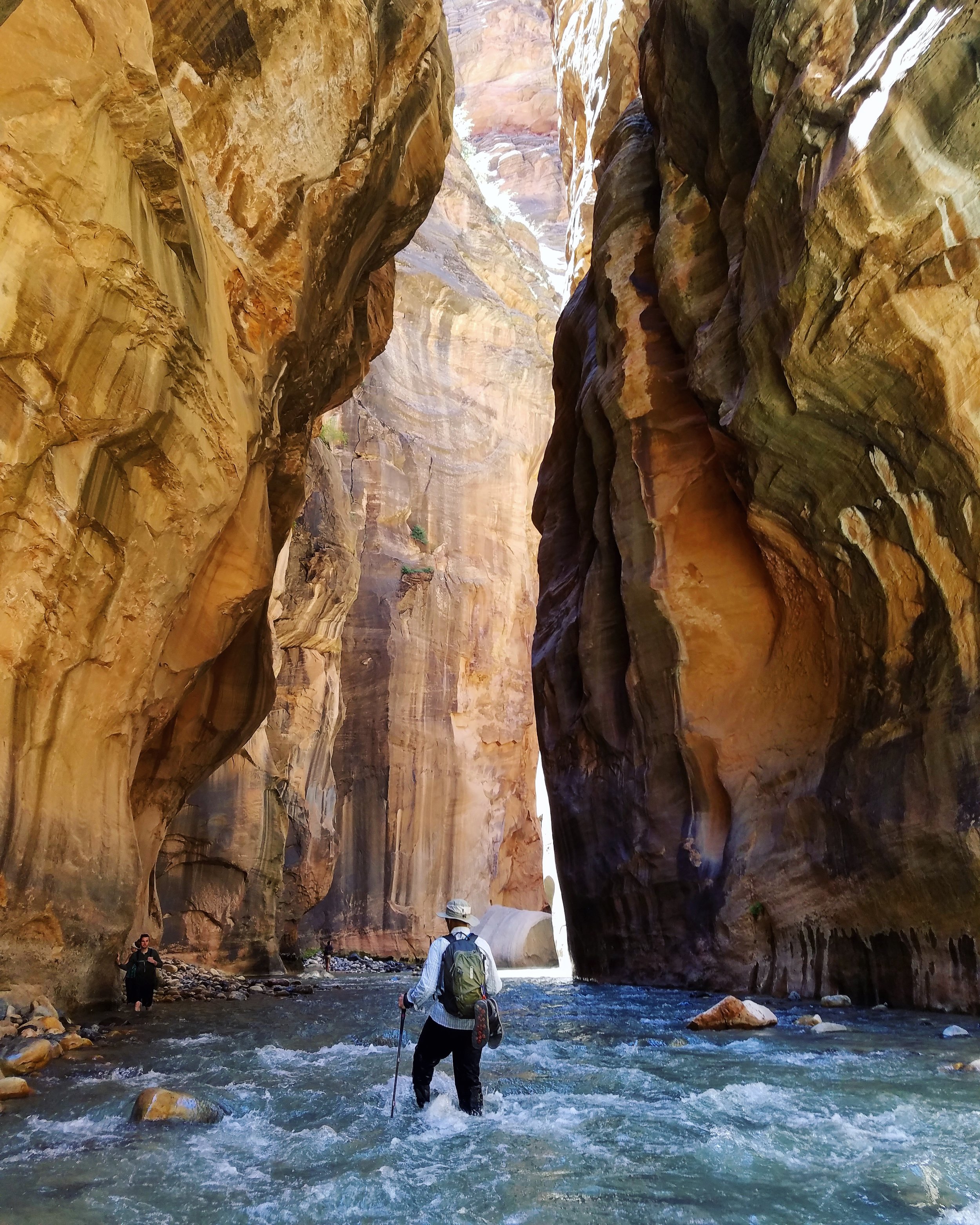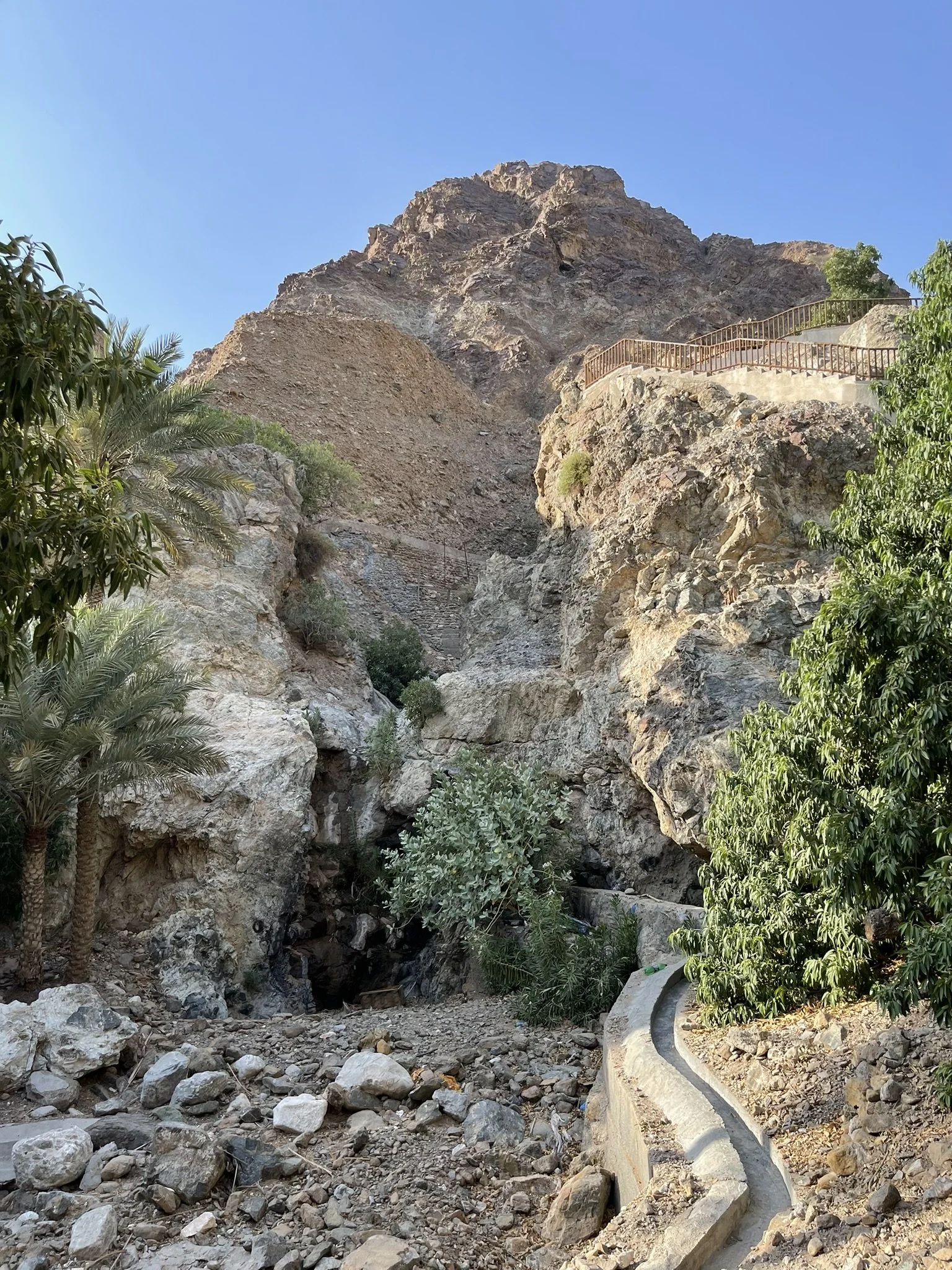Exploring Al-Wathba Wetland Reserve in Abu Dhabi

Al-Wathba Wetland Reserve, a true gem in the heart of Abu Dhabi's desert landscape, is a testament to the UAE's commitment to preserving its natural environment.
Wetlands are not exactly what comes to mind when I think of Abu Dhabi, which is well known for its harsh desert climate and sand dunes. However, the more time I spent exploring the region, the more I came to appreciate the ecological nuance of desert geology, climate, flora, and fauna.
This remarkable conservation area is a must-hike location when in the Emirates. Spreading over five square kilometers, it was established in 1998 by the country’s founder, the late Sheikh Zayed. His foresight in environmental preservation led to declaring Al-Wathba a protected area, ensuring its rich biodiversity thrives.
The history of Al-Wathba Wetland Reserve is as fascinating as its landscape. The area is a sabkha, a coastal salt flat that was inadvertently filled with freshwater during the 1990s due to agricultural runoff. This serendipitous event created a unique wetland ecosystem in the middle of the desert. Over the years, the reserve has developed into an ecological haven, attracting a wide array of wildlife and becoming a critical site for environmental research and conservation efforts.
The landscape is exactly what you’d expect when you think of a "desert wetland” and is a mix of sand, shallow water, grasses, reeds, shrubs, and lots of mud.
Flora and Fauna
The most iconic inhabitants of Al-Wathba are the Greater Flamingos. These vibrant birds began visiting the reserve in the late 1990s, and in 1998, for the first time in the UAE, they bred at Al-Wathba. This event marked a significant milestone in the reserve's history, highlighting its ecological importance. Every winter, thousands of flamingos flock to the wetlands, creating a spectacular display of pink hues against the backdrop of the desert. Unfortunately, during our visit, the flamingoes hadn’t yet arrived.
As no Greater Flamingo’s were present during our visit, this photo is courtesy of Hongbin @hbsun2013 via Unsplash.
Apart from the flamingos, Al-Wathba Wetland Reserve is home to over 250 species of birds, both migratory and resident. This includes the Black-winged Stilt, the Eurasian Spoonbill, and various species of sandpipers and plovers. The reserve also provides habitat for a variety of aquatic life, insects, and small mammals.
When hiking through Al-Wathba reserve, one of the hardest to miss because of their size but also easy to miss because of their elusiveness is the Dhub, the last remaining dinosaurs of the desert. The Egyptian Spiny-Tail Lizard, Uromastyx aegyptia, as its common name suggests, has a spiny tail for defense, a flat body, and loose skin that allows it to hide in narrow rock crevices. It is one of the largest members of the genus, with males averaging 76 centimeters (30 inches). Look for the large burrows in the sand and the noisy scurrying of these lizards throughout the dunes.
Notably, the wetland supports a rich variety of plant life, with more than 37 plant species recorded, some of which are rare and indigenous to the region.
One of our favorite finds was the Cynomorium coccineum, also known as “red thumb” or “Maltese Mushroom,” a parasitic plant found among the roots of desert shrubs and trees. It’s typically found in the sabkhas or salt flats in the UAE. Historically, the above-ground parts of the plant have been eaten for their medicinal properties.
Cynomorium coccineum also known as “red thumb” or “Maltese Mushroom.”
Another vital plant you’ll be able to see is the all-important Ghaf tree, Prosopis cineraria. Ghaf trees are essential to the region's ecosystem as they are drought-tolerant trees that can remain green even in harsh desert environments. They are necessary for the survival of many animal and plant species, including humans. In the reserve, you’ll find many shorter and shrubbier Ghaf trees, which give you a unique chance to closely examine what is typically one of the region’s tallest trees.
Up close of the flowers and leaves of a Ghaf (Prosopis cineraria) tree.
When visiting the reserve, you can indulge in a range of activities. Nature trails and bird hides are available for wildlife viewing and photography. Educational signs along the trails offer insights into the wetland's biodiversity and conservation efforts. The reserve is not just a haven for wildlife; it's a place for people to reconnect with nature and learn about the importance of preserving natural habitats.
I highly recommend finding a nice spot among the small dunes amidst the grass and shrubs; put your gear down, close your eyes, and just listen. Listen to the birds on the water, in the shrubs, and above you. Listen to the water gently lapping against the mud shores. Listen to the rapid patter of the lizard racing into the bushes, the marching of the ants, and the buzzing of the dragonflies. Listen to the wind as it rushes around you, rustling the reeds, and sending individual grains of sand tumbling about.
Viewing the birds out on the water from one of the bird blinds. Binoculars are highly suggested for bird-viewing.
Al-Wathba Wetland Reserve is a remarkable example of ecological conservation in a challenging desert environment. Its diverse wildlife, particularly the iconic flamingos, and its commitment to environmental education make it a must-visit destination for nature enthusiasts and conservationists alike.
Guides and Resources
Hiking Notes
The Al-Wathba Wetland Reserve features two self-guided walking trails: The Dhub Trail (1.5 km) through the dunes and the Flamingo Trail (3.0 km)which has viewing points along the water.
Trails are sand, gravel, and occasionally boardwalks.
Both trails can be completed as a loop, and feature please to stop and seek shade.
The trailhead has a large parking lot. Look for an attendant or security to ensure you are parking in the designated area.
There are no cafes or food. Drinking water sources may be limited, so bring plenty of water.
There is no fee or ticket for entry into the reserve.
Binoculars are highly recommended.
Precautions: Heat
Map
Coming Soon
Photos
Visiting
Address:
Al-Wathba Wetland Reserve
7H6M+FVQ - Mafraq Industrial Area - Abu Dhabi - United Arab Emirates
I am an avid hiker and amateur naturalist. I hike to satisfy that persistent curiosity of what of nature’s wonders lies just beyond the next bend.






















































